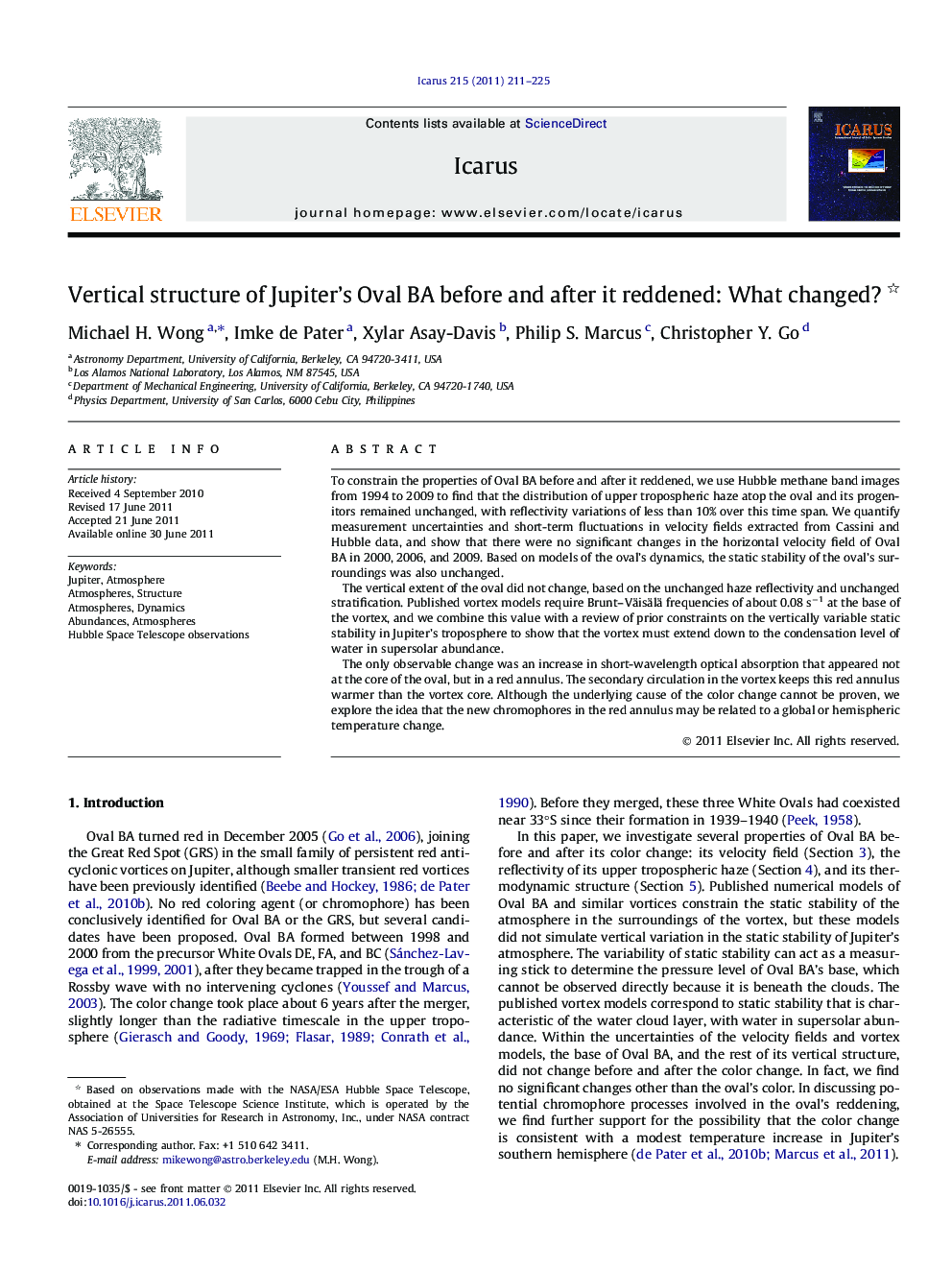| Article ID | Journal | Published Year | Pages | File Type |
|---|---|---|---|---|
| 1773978 | Icarus | 2011 | 15 Pages |
To constrain the properties of Oval BA before and after it reddened, we use Hubble methane band images from 1994 to 2009 to find that the distribution of upper tropospheric haze atop the oval and its progenitors remained unchanged, with reflectivity variations of less than 10% over this time span. We quantify measurement uncertainties and short-term fluctuations in velocity fields extracted from Cassini and Hubble data, and show that there were no significant changes in the horizontal velocity field of Oval BA in 2000, 2006, and 2009. Based on models of the oval’s dynamics, the static stability of the oval’s surroundings was also unchanged.The vertical extent of the oval did not change, based on the unchanged haze reflectivity and unchanged stratification. Published vortex models require Brunt–Väisälä frequencies of about 0.08 s−1 at the base of the vortex, and we combine this value with a review of prior constraints on the vertically variable static stability in Jupiter’s troposphere to show that the vortex must extend down to the condensation level of water in supersolar abundance.The only observable change was an increase in short-wavelength optical absorption that appeared not at the core of the oval, but in a red annulus. The secondary circulation in the vortex keeps this red annulus warmer than the vortex core. Although the underlying cause of the color change cannot be proven, we explore the idea that the new chromophores in the red annulus may be related to a global or hemispheric temperature change.
► The reflectivity of haze above Oval BA and its progenitors was constant from 1994 to 2008. ► Velocity fields of Oval BA in 2000, 2006, and 2009 are identical to within uncertainties. ► Static stability varies with altitude and constrains the vertical extent of vortices. ► Oval BA and the Great Red Spot extend down to a level where water in supersolar abundance condenses. ► Oval BA’s color change is consistent with a small undetected global or hemispherical temperature rise.
